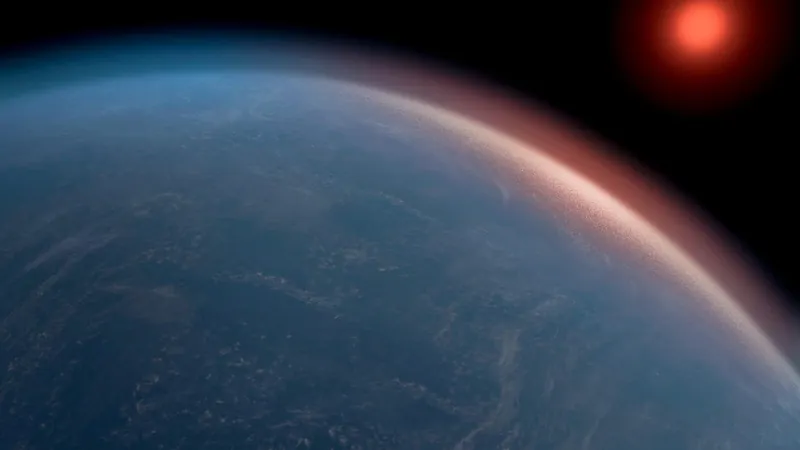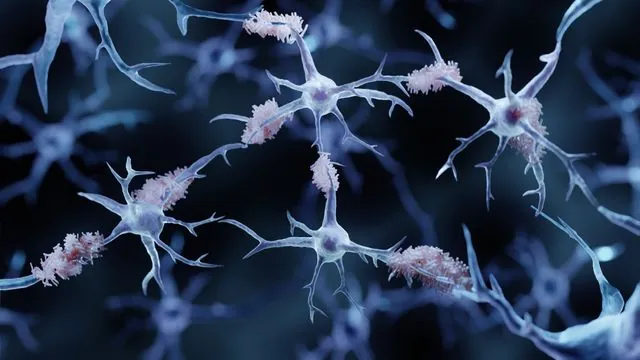
Is Life Hiding on K2-18b? Astronomers Unveil Groundbreaking Findings!
2025-04-26
Author: Arjun
Astronomers Edge Closer to Confirming Extraterrestrial Life!
Excitement brews in the astronomical community as researchers announce potential evidence pointing to life on the distant exoplanet K2-18b! A team from the University of Cambridge is harnessing data from the James Webb Space Telescope to investigate intriguing chemical traces on this planet.
The Chemical Clue: Can It Really Indicate Life?
The latest findings reveal compounds like dimethyl sulfide (DMS) and its relative dimethyl disulfide (DMDS), which are typically associated with biological processes, particularly those linked to marine life like phytoplankton. As experts put it, this could be groundbreaking news, suggesting life beyond Earth.
A recent publication in *Astrophysical Journal Letters* stresses that these results may just be the strongest sign yet of extraterrestrial life, raising hopes for the existence of vast oceans on K2-18b—a theory that has fascinated scientists for years.
Skepticism in Scientific Circles
However, not everyone is ready to jump on the bandwagon of optimism. Science writer Corey S. Powell has cautioned against premature conclusions, citing alternative explanations for DMS's presence, indicating it could stem from non-biological sources. His critical take suggests that the narrative around K2-18b could be fostering misconceptions.
What Do We Know About K2-18b?
Located 124 light-years away, K2-18b captures interest due to its size—more than eight times that of Earth, yet smaller than Neptune. The implications of finding even the simplest forms of life on such a planet are astounding, hinting at the existence of many more potentially habitable worlds in our universe.
A Cautious Approach to Discovery
Despite the tantalizing hints of life, Christopher Glein, a lead researcher at the Southwest Research Institute, emphasizes the need for cautious interpretation of the data. While some results pique interest, they also require verification through extensive additional research.
Glein stresses that it's essential to explore both biological and abiotic factors in understanding K2-18b's environment. He aptly compares the search for life to a courtroom trial, insisting that multiple lines of robust evidence must support any claims.
Looking Ahead: The Future of Exoplanet Exploration
As scientists delve deeper into the mysteries of K2-18b, other exoplanets such as those in the TRAPPIST-1 system and LHS 1140b are also under investigation for their habitability potential. The quest for signs of life continues, and each step forward is backed by the hope of unraveling the cosmos' secrets.
In this thrilling age of discovery, every finding brings us one step closer to answering the age-old question: Are we alone in the universe?


 Brasil (PT)
Brasil (PT)
 Canada (EN)
Canada (EN)
 Chile (ES)
Chile (ES)
 Česko (CS)
Česko (CS)
 대한민국 (KO)
대한민국 (KO)
 España (ES)
España (ES)
 France (FR)
France (FR)
 Hong Kong (EN)
Hong Kong (EN)
 Italia (IT)
Italia (IT)
 日本 (JA)
日本 (JA)
 Magyarország (HU)
Magyarország (HU)
 Norge (NO)
Norge (NO)
 Polska (PL)
Polska (PL)
 Schweiz (DE)
Schweiz (DE)
 Singapore (EN)
Singapore (EN)
 Sverige (SV)
Sverige (SV)
 Suomi (FI)
Suomi (FI)
 Türkiye (TR)
Türkiye (TR)
 الإمارات العربية المتحدة (AR)
الإمارات العربية المتحدة (AR)